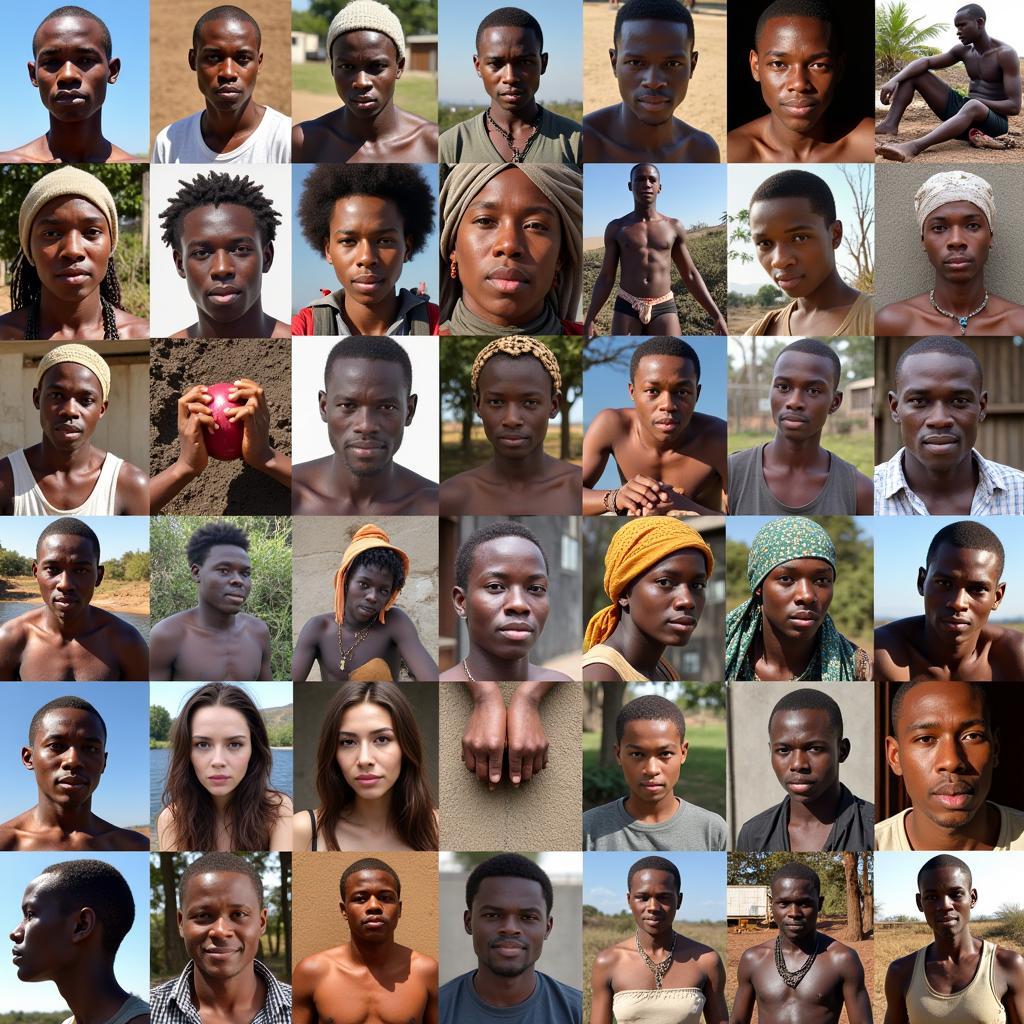Exploring Africa’s Hot, Wet Equatorial Region
The African hot wet equatorial region, a swathe of lush rainforest and diverse ecosystems, stretches across the continent near the equator. This region, characterized by high temperatures and heavy rainfall, supports a unique array of flora and fauna. From the dense jungles of the Congo Basin to the coastal rainforests of West Africa, this area offers a fascinating glimpse into a world teeming with life. Let’s delve deeper into the wonders of this unique environment.
Understanding the African Hot, Wet Equatorial Climate
This equatorial climate is defined by its consistently high temperatures and humidity. Average temperatures hover around 80°F (27°C) year-round, with little seasonal variation. Rainfall is abundant, typically exceeding 70 inches (1800mm) annually, and distributed relatively evenly throughout the year. This consistent rainfall fuels the growth of the region’s iconic rainforests. The humid air, heavy with moisture, creates a unique environment that fosters incredible biodiversity. What factors contribute to this consistent climate? The region’s proximity to the equator means it receives direct sunlight year-round, leading to consistently high temperatures. The Intertropical Convergence Zone (ITCZ), a band of low pressure around the equator, brings converging winds and heavy rainfall.
The Impact of Climate on Biodiversity
The hot, wet conditions of the equatorial region are crucial for maintaining the biodiversity of its rainforests. The consistent rainfall and warmth create the perfect environment for lush plant growth, providing habitat and sustenance for a vast array of animal species. From the smallest insects to the largest mammals, life in the equatorial rainforest is intertwined. This delicate balance is essential for the overall health of the ecosystem.
The equatorial rainforest is home to a wide variety of plant life, including towering trees, diverse shrubs, and vibrant epiphytes. This dense vegetation creates a multi-layered habitat, offering niches for various animal species. Many animals have adapted to the arboreal lifestyle, swinging through the canopy in search of food and shelter.
 Equatorial Rainforest Biodiversity
Equatorial Rainforest Biodiversity
Life in the African Equatorial Rainforest
The equatorial rainforest supports an incredible array of life. Millions of species of insects, amphibians, reptiles, birds, and mammals call this region home. Many of these species are endemic, meaning they are found nowhere else on Earth. The rainforest’s complex structure, with its layered canopy and diverse microhabitats, allows for such a high degree of specialization and biodiversity.
Challenges and Conservation Efforts
Despite its richness, the African hot wet equatorial region faces significant challenges. Deforestation, driven by logging, agriculture, and mining, poses a major threat to the rainforest ecosystem. Habitat loss leads to a decline in biodiversity, impacting countless species. Climate change also presents a growing concern, with altered rainfall patterns and increased temperatures potentially disrupting the delicate balance of the rainforest. Conservation efforts are crucial to protect this invaluable ecosystem for future generations. These efforts involve creating protected areas, promoting sustainable forestry practices, and raising awareness about the importance of rainforest conservation.
Dr. Amina Omar, a renowned conservation biologist specializing in African ecosystems, notes: “The equatorial rainforests are not just a collection of trees and animals, they are complex, interconnected systems that play a vital role in global climate regulation and provide essential resources for local communities.”
Conclusion
The African hot wet equatorial region is a treasure trove of biodiversity and natural wonder. Understanding its unique climate, the life it supports, and the challenges it faces is essential for its conservation. By working together, we can ensure that this incredible ecosystem continues to thrive for generations to come. The equatorial region’s future depends on our commitment to its protection.
FAQs
- What countries are located within the African hot wet equatorial region?
- What is the average temperature in the equatorial rainforest?
- What are the main threats to the African equatorial rainforest?
- What are some examples of animals that live in the equatorial rainforest?
- How can I contribute to rainforest conservation efforts?
Here are some other questions we often encounter:
- How does the equatorial climate impact local communities?
- What are the unique adaptations of plants and animals in the rainforest?
For more information on related topics, check out our other articles:
Need help? Contact us 24/7: Phone: +255768904061, Email: kaka.mag@gmail.com, or visit us at: Mbarali DC Mawindi, Kangaga, Tanzania.



